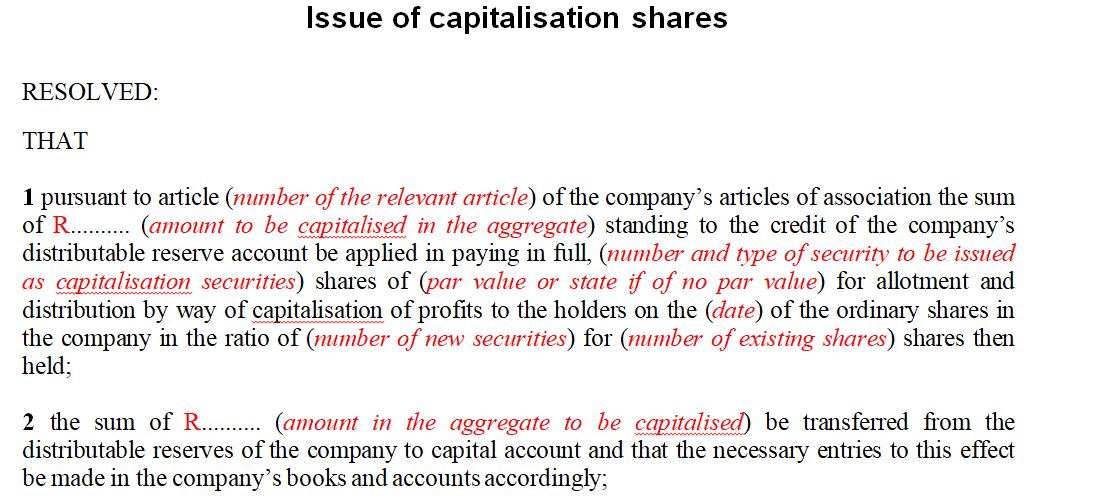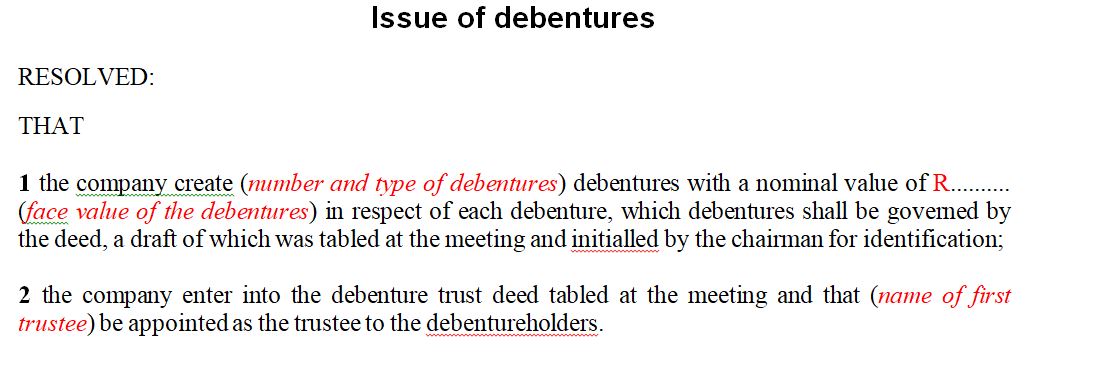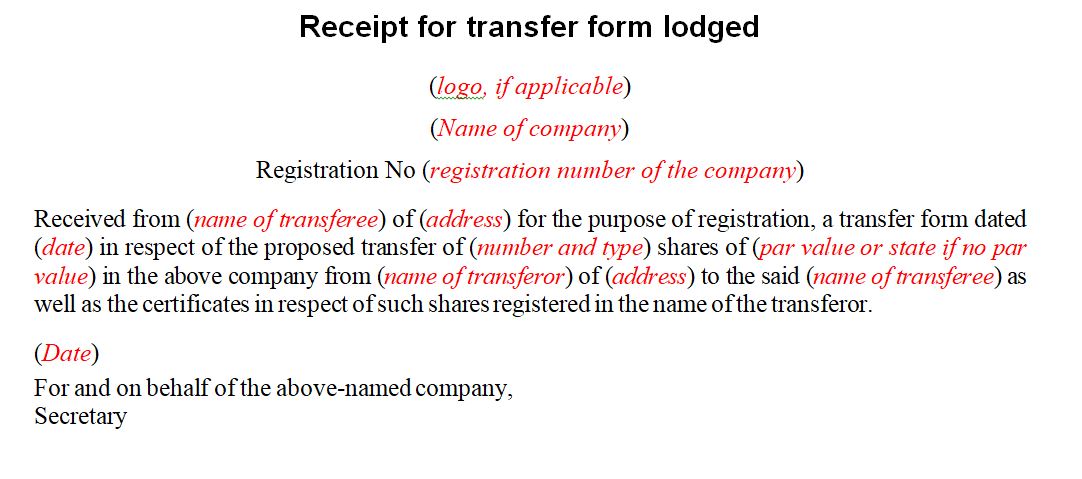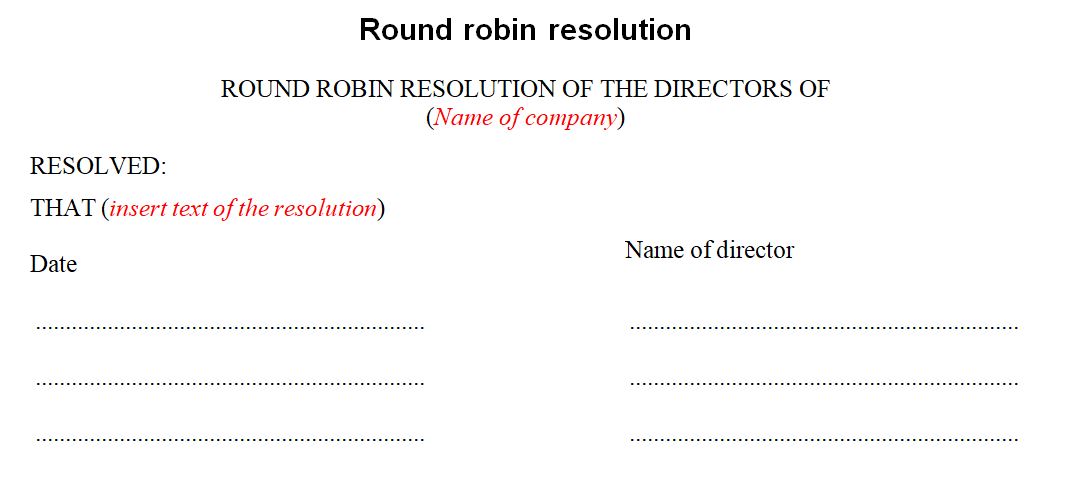



























Certified Extract of Certain Resolutions from the Minute Book
FREE
Ask the similar questions
Certified Extract of Certain Resolutions from the Minute Book
Certified Extract of Certain Resolutions from the Minute Book
What a Certified Resolution Entails?
A certified board resolution is a written document that provides an explanation of the actions of a company’s board of directors that has been verified by the secretary of the organization and approved by the board’s president.
There is often confusion as to the difference between a board resolution and board minutes. Both are important records of the activities of the board of directors of a company. However, board minutes describe all the discussions and resolutions that occur over the course of board of directors meeting.
It is prepared after the meeting has concluded. A resolution, on the other hand, describes one action taken by the board at a meeting, is prepared separately during the meeting, and is attested to by the secretary of the corporation before the president approves it.
Agenda for meeting can encompass many pointers and decision making. This agreement contains all clauses you can add to an agenda meeting for legal records.
Agenda for meeting : resolution clauses in contract for your use -
1. Round robin resolution
2. First meeting of the directors
3. Ratifying or adopting a pre-incorporation contract
4. General representative and signing authority
5. Allotment and issue of shares
6. Allotment and issue of shares pursuant to an agreement
7. Allotment and issue of shares pursuant to a renunciation
8. Issue of a renounceable letter of allotment
9. Refusal to allot
10. Declaration of an interim dividend
11. Issue of capitalisation shares
12. Issue of capitalisation shares from revaluation of asset
13. Issue of stock
14. Issue of debentures
15. Transfer of shares
16. Refusal to transfer shares
17. Receipt for transfer form lodged
18. Letter to transferor of proposed transfer
19. Advertisement of closing of the register
20. Payment of lump sum to executives
21. Resolution accepting resignation of a director
22. Resignation of a director
23. Resolution filling casual vacancy
24. Resolution fixing date of annual general meeting
25. Resolution fixing date of general meeting
26. Resolution rescinding a prior resolution
Is Certified Board Resolution Needed?
The laws under which a corporation is formed require that whenever a board of directors makes a decision or desires to take an action and it is voted on and approved by a majority of the board, a certified board resolution be created. This document is then made available to the public. The most common reasons for having a board resolution certified include:
• Opening financial accounts: Banks commonly request an individual representing a corporation to produce a certificate of authority that establishes his or her authority to make payments and conduct financial activities on behalf of the company.
• Conducting business: Representatives of a corporation, such as an employee or manager who is not on the board of directors, is often asked by other companies to disclose that the board of directors has given the representative permission to enter into agreement on behalf of the corporation. A certified board resolution is accepted as proof.
Steps to Creating a Certified Board Resolution
In order to prepare and execute a certified board resolution, the secretary of the corporation should follow these procedures:
• Review the corporate by-laws. The rules for conducing activities of the board of directors can be found in the company’s by-laws. Among the important items to review are the requirements for establishing a quorum in order for the meeting of the board to be considered valid and voting procedures.
• The chairperson will call the meeting to order. The chairperson is a member of the board elected for a term of usually one year and tasked with running board meetings. If the chairperson is not in attendance at a board meeting, then the CEO or president of the company or another member of the board can be designated to oversee proceedings.
• The chairperson will call for a vote on the issue before the board.
• The vote will be taken. If a majority of the board members are in favour of the action, the vote will pass and it will become a matter of corporate record.
• The secretary prepares the resolution and certifies that it was adopted by the board of directors according to the procedures set forth in the by-laws.
Elements of a Certified Board Resolution
Regardless of the authority granted through the certified board resolution, the certificate is required to contain the following information:
• Date when the resolution is passed by the board of directors.
• A designation of the party for whom the resolution is being prepared for and its address.
• Explanation of the action being taken by the board of directors and the reason for doing so.
• Name of the secretary.
• Legal name of the corporation and state of incorporation.
• Names of the board of directors voting for approval of the resolution.
• Meeting details, such as the date of the meeting, number of directors in attendance and how the directors in attendance voted.
• Name of the individual(s) being granted authority to act on behalf of the corporation, if necessary.
• Validation that all statements and declarations contained in the certificate are true and signature of the secretary to that effect.
• Imprint of the corporate seal.
Corporate resolutions reflect the major decisions taken by a company’s board of directors. They establish policies for managing a company. They can take many forms and can be used to authorize hiring decisions, officer compensation, dividend distribution, or any critical issue facing the business.
A resolution of a company by the chairperson of the meeting constitutes no more than rebuttable evidence of its proceedings. s73(8) does not provide for the secretary of a company to sign the minutes or resolution of a meeting but it is submitted that the MOI of a company may imbue the company secretary with that authority.
To impose such a function on a company secretary in the MOI should not legally be unacceptable. One of the duties imposed on a company secretary in terms of s88(2)(b) is to ensure that minutes of all shareholders' meetings, board meetings and the meetings of any committees of the directors, or of the company's audit committee, are properly recorded in accordance with the Act.
Should the MOI of a company make provision for its company secretary to sign the minutes or resolution of its directors' meetings, the signature would also constitute no more than rebuttable evidence of the proceedings of the meeting. In terms of s86 it is, however, mandatory only for public and state owned companies to appoint company secretaries, which means many private companies will not have one. A pre-prepared written resolution would serve both as a notice of the matter to be decided and would constitute the necessary written consent to the adoption thereof if signed be the majority of the directors of a company.
In conclusion, it is not a good practice to accept a board resolution signed by the chairperson of the meeting or signed by the company secretary tasked in the MOI with that function. The better practice is to require a resolution consented to by the majority of directors in terms of the provisions of s74 of the Act.
Every company must maintain the minutes of all meetings and resolutions of directors for a period of 7 years after the date of each meeting or the date on which the resolution was adopted. Furthermore, these records must be accessible from the company’s registered office or another location within South Africa by filing a notice setting out the alternative location.
What a Certified Resolution Entails?
A certified board resolution is a written document that provides an explanation of the actions of a company’s board of directors that has been verified by the secretary of the organization and approved by the board’s president.
There is often confusion as to the difference between a board resolution and board minutes. Both are important records of the activities of the board of directors of a company. However, board minutes describe all the discussions and resolutions that occur over the course of board of directors meeting.
It is prepared after the meeting has concluded. A resolution, on the other hand, describes one action taken by the board at a meeting, is prepared separately during the meeting, and is attested to by the secretary of the corporation before the president approves it.
Agenda for meeting can encompass many pointers and decision making. This agreement contains all clauses you can add to an agenda meeting for legal records.
Agenda for meeting : resolution clauses in contract for your use -
1. Round robin resolution
2. First meeting of the directors
3. Ratifying or adopting a pre-incorporation contract
4. General representative and signing authority
5. Allotment and issue of shares
6. Allotment and issue of shares pursuant to an agreement
7. Allotment and issue of shares pursuant to a renunciation
8. Issue of a renounceable letter of allotment
9. Refusal to allot
10. Declaration of an interim dividend
11. Issue of capitalisation shares
12. Issue of capitalisation shares from revaluation of asset
13. Issue of stock
14. Issue of debentures
15. Transfer of shares
16. Refusal to transfer shares
17. Receipt for transfer form lodged
18. Letter to transferor of proposed transfer
19. Advertisement of closing of the register
20. Payment of lump sum to executives
21. Resolution accepting resignation of a director
22. Resignation of a director
23. Resolution filling casual vacancy
24. Resolution fixing date of annual general meeting
25. Resolution fixing date of general meeting
26. Resolution rescinding a prior resolution
Is Certified Board Resolution Needed?
The laws under which a corporation is formed require that whenever a board of directors makes a decision or desires to take an action and it is voted on and approved by a majority of the board, a certified board resolution be created. This document is then made available to the public. The most common reasons for having a board resolution certified include:
• Opening financial accounts: Banks commonly request an individual representing a corporation to produce a certificate of authority that establishes his or her authority to make payments and conduct financial activities on behalf of the company.
• Conducting business: Representatives of a corporation, such as an employee or manager who is not on the board of directors, is often asked by other companies to disclose that the board of directors has given the representative permission to enter into agreement on behalf of the corporation. A certified board resolution is accepted as proof.
Steps to Creating a Certified Board Resolution
In order to prepare and execute a certified board resolution, the secretary of the corporation should follow these procedures:
• Review the corporate by-laws. The rules for conducing activities of the board of directors can be found in the company’s by-laws. Among the important items to review are the requirements for establishing a quorum in order for the meeting of the board to be considered valid and voting procedures.
• The chairperson will call the meeting to order. The chairperson is a member of the board elected for a term of usually one year and tasked with running board meetings. If the chairperson is not in attendance at a board meeting, then the CEO or president of the company or another member of the board can be designated to oversee proceedings.
• The chairperson will call for a vote on the issue before the board.
• The vote will be taken. If a majority of the board members are in favour of the action, the vote will pass and it will become a matter of corporate record.
• The secretary prepares the resolution and certifies that it was adopted by the board of directors according to the procedures set forth in the by-laws.
Elements of a Certified Board Resolution
Regardless of the authority granted through the certified board resolution, the certificate is required to contain the following information:
• Date when the resolution is passed by the board of directors.
• A designation of the party for whom the resolution is being prepared for and its address.
• Explanation of the action being taken by the board of directors and the reason for doing so.
• Name of the secretary.
• Legal name of the corporation and state of incorporation.
• Names of the board of directors voting for approval of the resolution.
• Meeting details, such as the date of the meeting, number of directors in attendance and how the directors in attendance voted.
• Name of the individual(s) being granted authority to act on behalf of the corporation, if necessary.
• Validation that all statements and declarations contained in the certificate are true and signature of the secretary to that effect.
• Imprint of the corporate seal.
Corporate resolutions reflect the major decisions taken by a company’s board of directors. They establish policies for managing a company. They can take many forms and can be used to authorize hiring decisions, officer compensation, dividend distribution, or any critical issue facing the business.
A resolution of a company by the chairperson of the meeting constitutes no more than rebuttable evidence of its proceedings. s73(8) does not provide for the secretary of a company to sign the minutes or resolution of a meeting but it is submitted that the MOI of a company may imbue the company secretary with that authority.
To impose such a function on a company secretary in the MOI should not legally be unacceptable. One of the duties imposed on a company secretary in terms of s88(2)(b) is to ensure that minutes of all shareholders' meetings, board meetings and the meetings of any committees of the directors, or of the company's audit committee, are properly recorded in accordance with the Act.
Should the MOI of a company make provision for its company secretary to sign the minutes or resolution of its directors' meetings, the signature would also constitute no more than rebuttable evidence of the proceedings of the meeting. In terms of s86 it is, however, mandatory only for public and state owned companies to appoint company secretaries, which means many private companies will not have one. A pre-prepared written resolution would serve both as a notice of the matter to be decided and would constitute the necessary written consent to the adoption thereof if signed be the majority of the directors of a company.
In conclusion, it is not a good practice to accept a board resolution signed by the chairperson of the meeting or signed by the company secretary tasked in the MOI with that function. The better practice is to require a resolution consented to by the majority of directors in terms of the provisions of s74 of the Act.
Every company must maintain the minutes of all meetings and resolutions of directors for a period of 7 years after the date of each meeting or the date on which the resolution was adopted. Furthermore, these records must be accessible from the company’s registered office or another location within South Africa by filing a notice setting out the alternative location.


